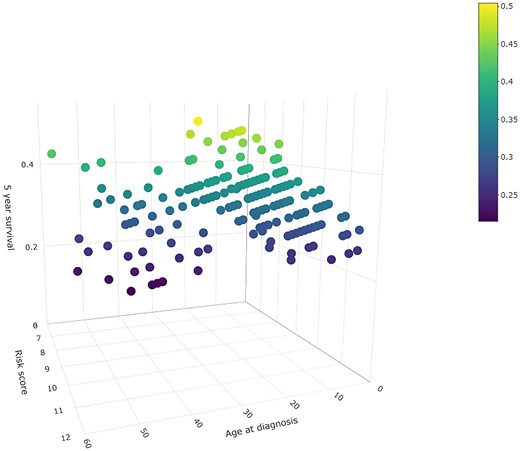April 9, 2025
The authors have generalized the pseudo-observations approach to bivariate survival data subject to right censoring. Pseudo-observations approach was originally developed by Anderson (2003) for estimating covariates effect on time-to-event data. This extension allowed for estimating covariate effects on correlated pairs of survival times. Also, methods that model dependence between two outcomes like copulas, frailty models, and conditional independence models can also be accommodated. To modify Anderson’s approach for this, they modified the generalized linear model approach with a link function, a logit link function where inside the log function they have their bivariate survival function in place of the univariate survival function, which is similar to a proportional odds model originally proposed by Anderson. They basically generalized this to the bivariate case. The estimates were based on the generalized estimating equation. The pseudo-observations were based on either the Dabrowska (1988) estimator or the Lin and Yang (1993) estimator of the bivariate survival function. For the variance, they recommended using the ordinary sandwich estimator for both of the estimators just mentioned.
They then conducted simulations and they found the Dabrowska (1988) estimator had lower bias and better variance than that of Lin and Yang (1993) for the bivariate censoring scenario. Usually in the pseudo-observation literature, a fixed time appoint approach was used. This wasn’t clear for the bivariate data so they selected particular percentiles and calculated the bivariate empirical CDF at these percentiles. The Dabrowska (1988) method was again better at time point selection and less sensitive to the choice of time points. Furthermore, under model misspecification, they found the pseudo-observation approach managed to provide good predictions of the covariate-adjusted bivariate survival function.
They further demonstrated their method on two real datasets, a diabetic retinopathy one and a burn victim dataset. They used just the Dabrowska (1988) estimator for these analyses. They also calculated conditional probabilities and the confidence intervals around these. In their discussion, they referred to a reviewer comment that their proportional odds modeling relied on some parametric assumptions, but they found that in general, it still held up well, and also one could use other link functions like probit or cloglog, which would then give alternatives to the proportional odds modeling. They talked about extending their method to the multivariate case, which could be done by using the multivariate Kaplan-Meier estimator of Prentice and Zhao (2018) and then using this to define the relevant pseudo-observations.
Written by,
Usha Govindarajulu
Keywords: survival analysis, pseudo observations, bivariate survival data, proportional odds
References:
Dabrowska D. M. (1988). “Kaplan-Meier estimate on the plane”. The Annals of Statistics, 16, 1475-1489.
Lin D. Y., Ying Z. (1993). “A simple nonparametric estimator of the bivariate survival function under univariate censoring”. Biometrika, 80, 573–581.
Prentice R. L., Zhao S. (2018). “Nonparametric estimation of the multivariate survivor function: the multivariate Kaplan-Meier estimator”. Lifetime Data Analysis, 24, 3–27.
Travis-Lumer Y, Mandel M, and Betensky RA (2025) “Pseudo-observations for bivariate survival data” Biometrics, 81(1): https://doi.org/10.1093/biomtc/ujaf006
https://oup.silverchair-cdn.com/oup/backfile/Content_public/Journal/biometrics/81/1/10.1093_biomtc_ujaf006/10/m_ujaf006fig1.jpeg?Expires=1746090430&Signature=Ry1dezNxVwcAPHdoZV821pAdT1H0r5Sdnbg1rYUqSYfrkoA3~qviLy0sRKA5Bq0dRGepbvSj2-OGYYlCSvR4qnVEWKJ60Xvq6tRlPDedKZeohgfjtl7ySlhi8x277zNLdyFuAN2e~20LNAWyUoXbO-1oybiRUruB8Xz2EsEZ2iyz7FzSS~hFH2hpMxfiyXfZ6m9nk8S38RsVAVZ7FOLaOu1N5dJNVLAXbjYAlP2rYfNl67FoLkCZeL4qGI-8xM0JkAOHgSzsUcYEJf4YF54RONFMyMOZ94ptuK5Ohs9MOfZy1xFjuWAQ-bszQV4qOSXRc7RKe0zrueLdutIsjWim-Q__&Key-Pair-Id=APKAIE5G5CRDK6RD3PGA
